Growing Mushrooms is easy to process with a little guidance. Although you can’t use regular garden soil, you can use spent coffee grounds. Growing Mushrooms in coffee grounds is an easy and fun pastime for anyone interested in the mysterious world of fungi. It is a good starting point because it uses a sufficient medium in many homes.
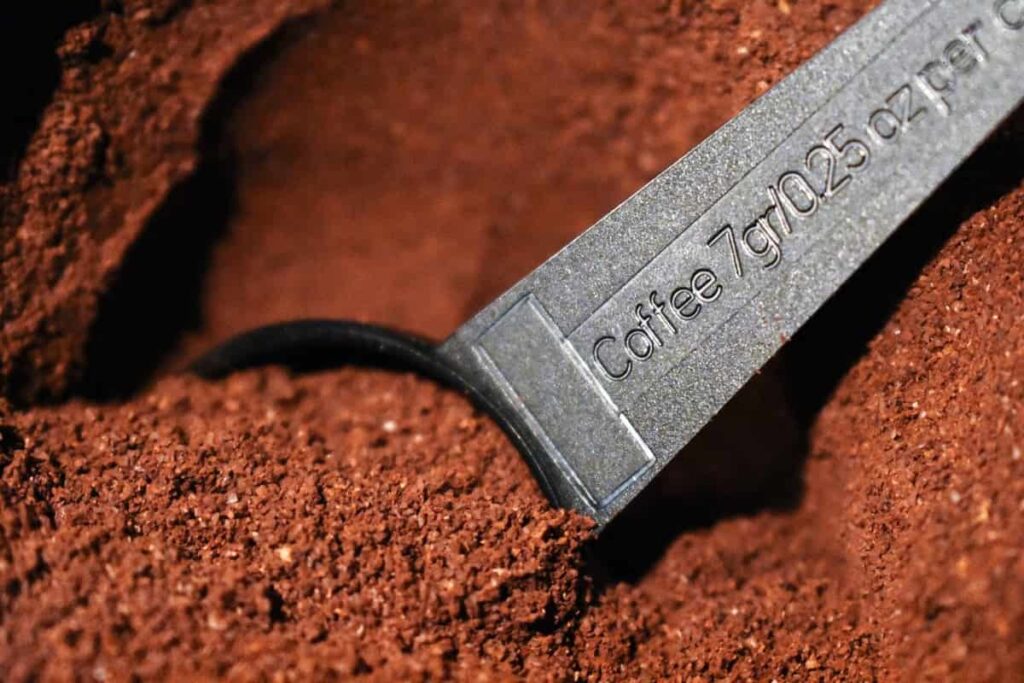
Coffee grounds are the best and most readily available mediums for growing Mushrooms. The Mushrooms will get all the nutrients they need from the coffee grounds. Mushrooms also turn coffee grounds into a more beneficial soil amendment and fertilizer than coffee. Growing coffee Mushrooms is very easy and can be done indoors or outdoors. Growing Mushrooms in coffee grounds allows anyone to grow delicious Mushrooms using easily accessible and free materials.
How to grow Mushrooms in coffee grounds at home
What Mushrooms grow best in coffee grounds?
Coffee grounds are a free, easy-to-source, and fast way to grow Mushrooms. Growing our Mushrooms also reduces the carbon footprint necessary to get our food to market. This process will make you an environmental warrior while providing delicious food for your family. Oyster Mushrooms and shiitake Mushrooms are varieties that grow well on coffee grounds and are easy to grow even for beginners. If you see mold on the coffee grounds, sprinkle a small amount of water. Other Mushroom varieties are Button and Portobello Mushrooms.
Best Mushroom varieties to grow on used coffee grounds
- Oyster Mushrooms: Oyster Mushrooms are great for beginners. However, growing Oyster Mushrooms on spent coffee grounds is a simple and fun home activity for all ages, which can yield some great edible Mushrooms.
- Portobello Mushrooms: Portobello Mushrooms are large and delicious. They are often used as a beef substitute in vegetarian burgers. Portobello Mushrooms are large and, therefore, will need a lot of ground. They are in the full-grown stage of button Mushrooms.
- Button Mushrooms: Button Mushrooms, also known as White or White Button Mushrooms, grow well on coffee grounds.
- Shiitake Mushrooms: Shiitake Mushrooms are a good variety to grow on coffee grounds. Coffee grounds are available freely and do not need to be sterilized, making them a suitable source for shiitake Mushrooms.
In case you missed it: Top 22 Steps/Ways to Boost Mushroom Yield: How to Increase Production, Quality, and Size
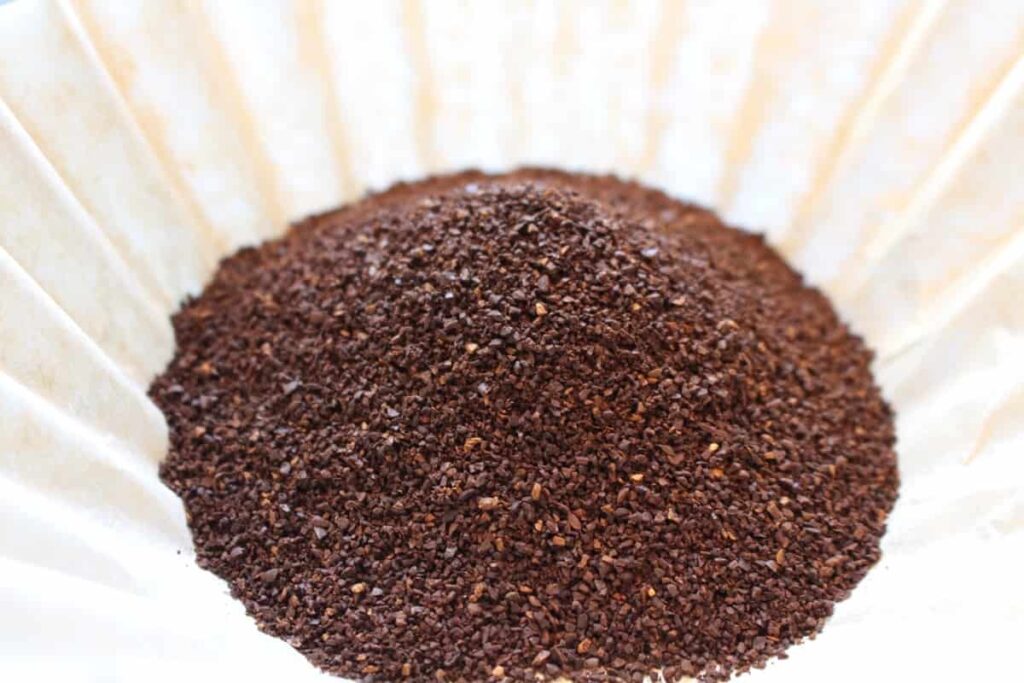
Why should I use coffee grounds to grow Mushrooms?
Coffee is an excellent gardening and composting ingredient, a carbon-generating product that can help balance soil and compost piles. But coffee is also an excellent substrate for Mushrooms because it’s already pasteurized. When growing Mushrooms, pasteurized soil is essential to prevent competing bacteria, fungi, and insects from growing inside.
Since the coffee grounds used are already pasteurized, there are very few steps to grow Mushrooms successfully. The important thing to remember is to use same-day coffee grounds, which means you’ll have to use what’s in your coffee maker from today. Also, used coffee grounds may not be hot, so you’ll need to cool them down before using them.
Growing Shiitake Mushrooms in Coffee Grounds
Shiitake Mushrooms are not an easy process to grow because they are not aggressive and require an incubation period. However, these Mushrooms will produce more fresh Mushrooms, which pays off for the extra time and energy spent growing them.
Growing Portobello Mushrooms in Coffee grounds
Portobello Mushrooms are in the full growing stage of Button Mushrooms. They are widely used as a beef substitute for vegetarian burgers due to their delicious taste and large size. These Mushrooms do well in coffee grounds, and because of their size, you will need more coffee grounds and containers to grow them.
These Mushrooms have white stems and a thick brown cap. These Mushrooms take 3 to 4 weeks to grow fully. However, they are edible at any stage. You also harvest in three clusters before removing the mycelium. When you grow these Mushrooms, remember that they need a lot of water because their skin is not tough enough to retain moisture.
Growing oyster Mushrooms in coffee grounds
The Oyster Mushroom variety is the easiest and fastest edible Mushroom variety to grow on coffee grounds. They are delicious and nutritious. Oyster Mushrooms like to grow in coffee grounds, which are readily and freely available. Firstly, use clean equipment and rubber gloves to mix used coffee grounds and Mushroom spawn. Then, add enough clean water to wet the coffee grounds.
How to grow Button Mushrooms in coffee grounds?
Button Mushrooms are some of the most specific types of Mushrooms you can grow at home. They are usually relatively small, with a two to seven centimeters capsize. The caps are white, round, and smooth. These Mushrooms take 30 to 35 days to reach full maturity. Therefore, the fruit or cap should be tightly closed when harvesting.
In case you missed it: Top 20 Steps to Boost Coffee Bean Yield: How to Increase Production, Quality, size, and Tips
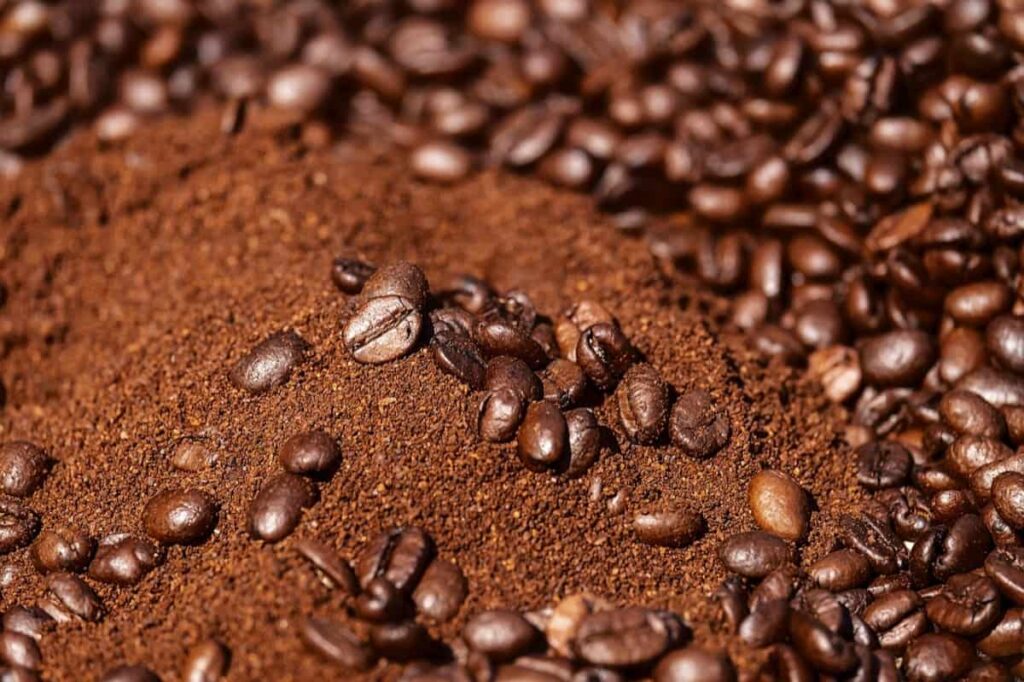
Things and equipment you’ll need to grow mushrooms in coffee grounds
- Used coffee grounds
- Mushroom spawn with sawdust
- About 2-to-5-gallon size bucket/container
- Spray bottle and cellophane
- Rubbing alcohol
- Scissors
- Cardboard
- Plastic Bag
Conditions required for Growing Mushrooms in coffee grounds
- Nutrients: Mushrooms obtain their nutrients from organic matter. Some essential nutrients for Mushrooms include nitrogen, protein, fat, lignin, starch, and sugar. In addition, coffee grounds are rich in nutrients, making them suitable for growing both Button and Shiitake Mushrooms.
- Moisture: Like other fungi, Mushrooms thrive in moist environmental conditions. Humidity conditions for growing Mushrooms range from 35 to 45 percent.
- Temperature: It will be best if you grow button Mushrooms at 12 to 16°C. To maintain these temperatures, you should also remember that dry air and strong drafts can stunt or kill pre-grown Mushrooms. Shiitake Mushrooms grow at temperatures from 4 to 32°C.
Benefits of Growing Mushrooms in Coffee Grounds
Mushrooms growing in coffee grounds is a fun process and an alternative substrate choice for hobby growers looking to try something different. Growing on a coffee ground has many advantages:
Recycling waste products
Mushrooms are produced to recycle, one of their many advantages. For example, when a tree falls in the forest, the Mushroom mycelium breaks down the complex molecules of the wood. It recycles them back into the food chain, where insects, bacteria, and fungi can use them to return to the soil. They are essential players in the nutrient cycle, and their ability makes them ideal for recycling various organic wastes. Oyster Mushrooms, in particular, are extraordinarily adaptable, growing on hundreds of different types of agricultural waste.
It is an easy process
Starting to grow Mushrooms on coffee grounds is easy. Ending the sterilization process means it’s much easier to get started. You don’t need expensive equipment either. All you need to do is collect used coffee grounds, mix them with a Mushroom pawn, put it in a bag, and watch them grow. Mushroom spawns are similar to seedlings in plants.
In case you missed it: Hydroponic Mushroom Farming – Production, Cultivation
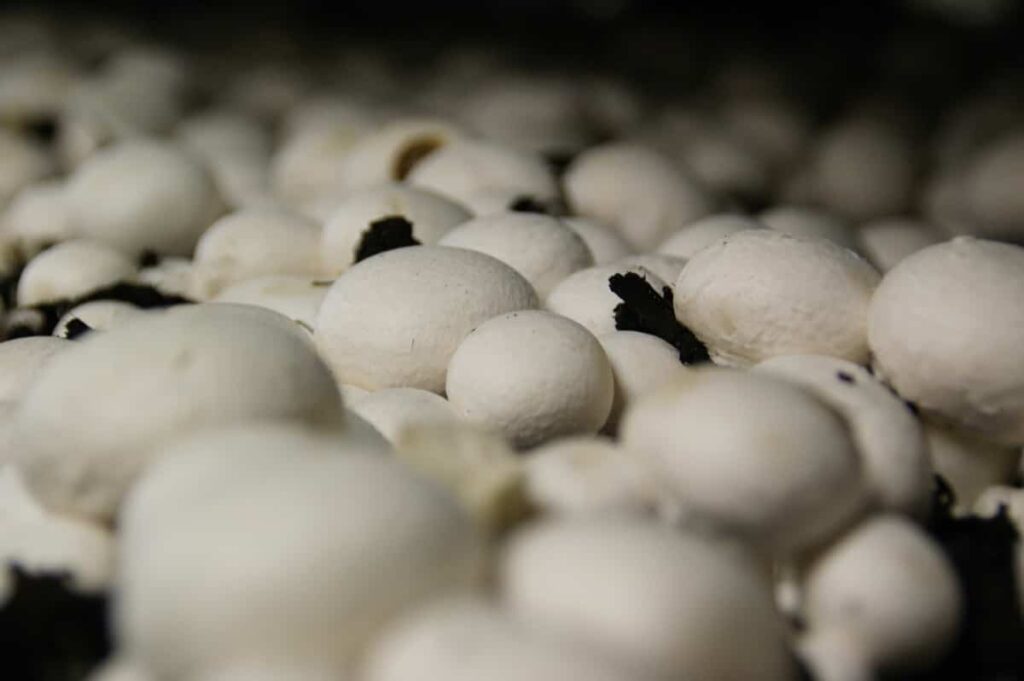
Easy to source substrate
Waste grounds are often just thrown in the bin, and if you provide them with a bucket and arrange a collection time, most cafes will be more than happy to give you their grounds. It makes an excellent free source of substrate, especially if you are in a large city or town with a lot of waste.
Finding a medium is easy
Coffee grounds are often thrown into the bin. Most coffee cafes will easily grind your used coffee if you don’t have any at home. Ground coffee is an excellent and free resource for growing Mushrooms.
No need for substrate pasteurization or sterilization
Generally, the substrate should be pasteurized or sterilized when cultivating Mushrooms. Pasteurization with hot water or steam is the most popular method of removing impurities from the substrate, which is either a small-scale contaminant or a costly and energy-consuming one. Instead, growing on coffee grounds have already been pasteurized through the brewing process, allowing you to skip this energy-intensive and expensive step altogether. However, to avoid this step, it is important to take care of the grounds properly.
Easy to work with
Since you won’t need to sterilize your growing substrate, it’ll be much easier to get started, and you won’t need a lot of expensive equipment. Once you figure out your growth plan, you can go to your local cafe, collect some grounds, mix in a spawn, put it in a bag, and watch it grow. It will be like planting tomato or basil seeds.
Easy-to-source
Most cafes will happily provide you with your waste if you just let them know the pick-up time and bring your bucket. It makes a great free supply of substrate, especially if you live in a big city with lots of discarded coffee.
Can you grow Mushrooms from coffee grounds?
Growing Mushrooms in coffee grounds is a method of Mushroom cultivation that is perfect at home. Growing Mushrooms in coffee grounds is the easiest and cheapest method that can be done. Growing Mushrooms in coffee grounds is easy with a little guidance.
In case you missed it: Mushroom Cultivation Income, Cost, Yield, Profits
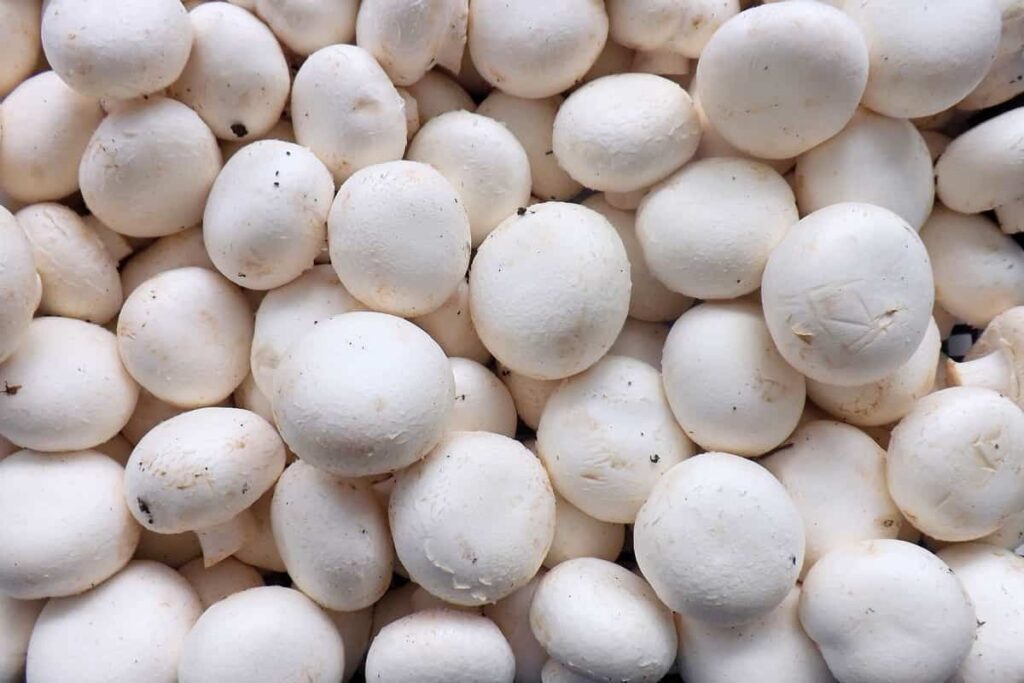
Step 1: Get the coffee grounds
Mushrooms growing from coffee grounds is a fun project that helps utilize coffee grounds that would otherwise go to waste. Coffee grounds are a very excellent growing medium for Mushrooms, especially Oyster Mushrooms, because they have already been sterilized by the coffee-making process and are rich in nutrients. For 500 grams (17.6 oz) of Mushroom spawn, you will need 2.5 kg (88 oz) of fresh coffee grounds. The best way to get this amount of fresh coffee grounds (brewed that day) is to go to a cafe and ask nicely. They are more than happy to give it.
Step 2: Get the right materials for growing Mushrooms in coffee grounds
You will need the following materials to grow Mushrooms in your home coffee fields. Firstly, a good supply of coffee grounds; make sure you use fresh coffee grounds, a container to put the coffee grounds substrate, and a Mushroom spawn of the desired Mushroom species you want to grow.
You can buy a fully colonized Mushroom spawn from us, and we recommend using grain spawn or sawdust spawn. A container can be a myriad of things. It can be a plastic bottle you cut open and clean the inside. You can use filter patch bags if you have access to them. You can also use 3–5-gallon buckets.
Step 3: Find a container for the Mushrooms
The best thing to use is a filter patch grow bag, which can usually be bought with Mushroom spawn. Alternatively, you can use a large, resealable freezer bag, sterilized milk carton, or ice cream tub with four small holes in the sides.
Step 4: Transfer the spawn to the container
Please wash your hands thoroughly with antibacterial soap, then mix the Mushroom spawn with the coffee grounds, breaking them up with your hands to ensure they are evenly distributed. Finally, place the inoculated coffee grounds in a plastic bag or container and seal them tightly.
Step 5: Place the Mushrooms in the right environment
Store the bag or container in a warm, dark place, somewhere between 18 to 25°C, such as in an airing closet or under a sink. Leave it here for two to four weeks or until it turns completely white—this is due to a colony of coffee-grinding mycelia. Again, cut off any green or brownish-black spots on the colonizing substrate, as this can make you sick.
Step 6: Transfer the Mushrooms
Once the contents of the bag or container are completely white, move it to a bright spot (but not in direct sunlight) and cut a 2″ by 2″ hole in the top. Next, wash the contents of the container with water twice a day to prevent them from drying out—Mushrooms will not grow in very dry conditions.
Step 7: Prepare the Mushrooms for fruiting
You should see little “pinheads” of Mushrooms growing (at the 2-to-3-week mark). Place your bag in a bright spot or on a windowsill with indirect sunlight. Now you can start sprinkling the bag with a light coating of water. It should be done twice a day, once in the morning and once in the evening. Be careful not to water the straw; this can inhibit Mushroom growth and promote mold. This is to increase the humidity of the air around the bag rather than watering it directly as you would a plant.
In case you missed it: Polyhouse Mushroom Farming for Profit – A Full Guide
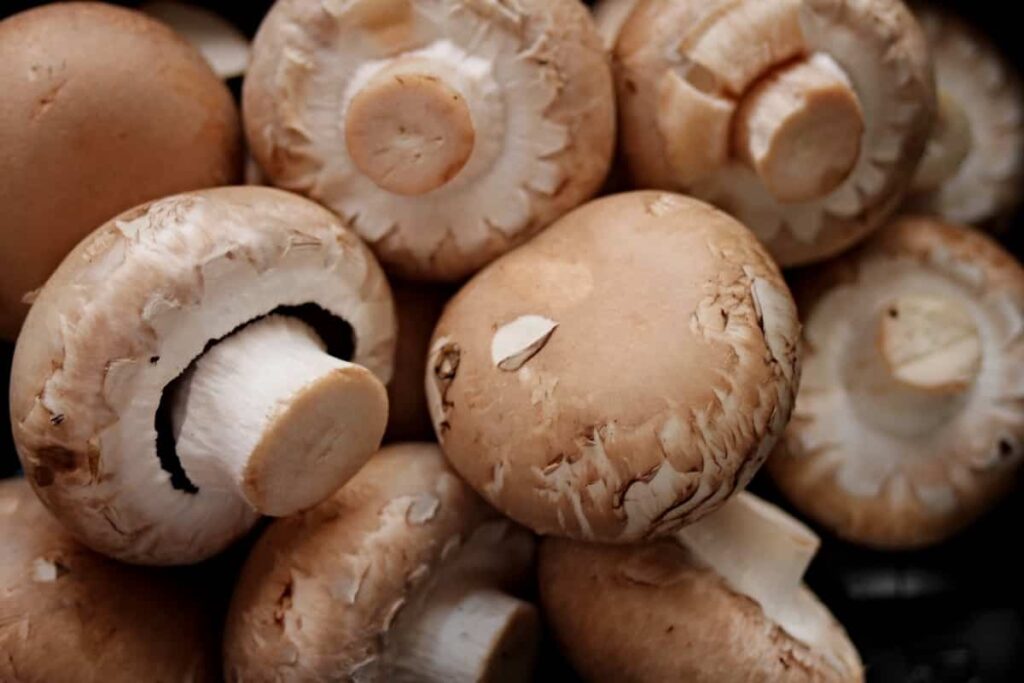
Step 8. Harvest the Mushrooms
Over the next five to seven days, small Mushrooms will begin to grow. Keep washing them with water; they should double in size daily. Mushrooms are ready to harvest when their cups begin to turn slightly upward. When the Mushrooms have stopped growing, ground the coffee grounds and plant them outside under bark mulch or compost, and new Mushrooms may develop depending on the season.
You can pull the Mushrooms by hand or use a knife or scissors to cut the Mushrooms at the base. It is the time to harvest when the tops of the caps begin to flatten. Cook the Mushrooms after turning the cluster or cutting it with a knife, and enjoy the satisfaction of eating Mushrooms made from coffee waste.
Growing Mushrooms in coffee grounds in a jar
- Gather your coffee grounds. Leave a bucket/bin at your favorite cafe and pick it up the next day.
- Soak the coffee grounds in the Oyster Mushroom spin. Weigh the coffee grounds.
- Incubate the grow bags for 2-3 weeks.
- Place in a fertile environment.
- Collect
How much time does it take to grow Mushrooms in coffee grounds?
Depending on the type of Mushroom you grow, it will take 5 to 10 days for the Mushrooms to show signs of growth. So, from this moment, it may only be a few days before the Mushrooms are ready to harvest.
Why are coffee grounds great for Mushrooms?
When growing Mushrooms, the goal is to ensure that the desired mycelium survives in abundance. Coffee grounds are so rich in nutrients that many molds thrive. By getting the right mycelium to settle in the first place, it will rear its head and repel other unwanted molds. It is the best tip to use coffee grounds while fresh, i.e., within 24 hours of brewing. Disinfection by boiling with hot water is effective. Mycelium is a network of white root-such cells from which Mushrooms grow. It is commonly called “Mushroom roots.”
Do I need to sterilize coffee grounds to grow Mushrooms?
Used coffee grounds do not need to be sterilized or pasteurized, as the brewing process does. It saves time and effort compared to other Mushroom growing substrates.
Conclusion
Mushrooms are easy to grow, and coffee grounds make an excellent Mushroom growing medium. This is because Mushrooms can get all their nutritional needs from coffee grounds. Also, coffee grounds have enough air spaces to allow Mushroom spawn to spread. Growing Mushrooms in coffee fields makes perfect sense. But instead, you take a huge waste resource that’s still high in nutrients and turn it into deliciously nutritious Mushrooms.
- Economical Aquaculture: A Guide to Low-Budget Fish Farming
- 15 Common Planting Errors That Can Doom Your Fruit Trees
- How to Make Houseplants Bushy: Effective Tips and Ideas
- Innovative Strategies for Boosting Coconut Pollination and Yield
- Pollination Strategies for Maximum Pumpkin Yield
- The Complete Guide to Chicken Fattening: Strategies for Maximum Growth
- Natural Solutions for Tulip Problems: 100% Effective Remedies for Leaf and Bulb-Related Issues
- Revolutionizing Citrus Preservation: Towards a Healthier, Greener Future
- Natural Solutions for Peony Leaf and Flower Problems: 100% Effective Remedies
- Maximizing Profits with Avocado Contract Farming in India: A Comprehensive Guide
- Natural Solutions for Hydrangea Problems: 100% Effective Remedies for Leaf and Flowers
- The Ultimate Guide to Choosing the Perfect Foliage Friend: Bringing Life Indoors
- From Sunlight to Sustainability: 15 Ways to Use Solar Technology in Agriculture
- The Ultimate Guide to Dong Tao Chicken: Exploring from History to Raising
- The Eco-Friendly Makeover: How to Convert Your Unused Swimming Pool into a Fish Pond
- Mastering the Art of Delaware Chicken Farming: Essentials for Healthy Backyard Flocks
- 20 Best Homemade Fertilizers for Money Plant: DIY Recipes and Application Methods
- How to Craft a Comprehensive Free-Range Chicken Farming Business Plan
- Brighten Your Flock: Raising Easter Egger Chickens for Beauty and Bounty
- How to Optimize Your Poultry Egg Farm Business Plan with These Strategies
- Subsidy for Spirulina Cultivation: How Indian Government Schemes Encouraging Spirulina Farmers
- Ultimate Guide to Raising Dominique Chickens: Breeding, Feeding, Egg-Production, and Care
- Mastering the Art of Raising Jersey Giant Chickens: Care, Feeding, and More
- Ultimate Guide to Raising Legbar Chickens: Breeding, Farming Practices, Diet, Egg-Production
- How to Raise Welsummer Chickens: A Comprehensive Guide for Beginners
- How to Protect Indoor Plants in Winter: A Comprehensive Guide
- Ultimate Guide to Grow Bag Gardening: Tips, Tricks, and Planting Ideas for Urban Gardeners
- Guide to Lotus Cultivation: How to Propagate, Plant, Grow, Care, Cost, and Profit
- Agriculture Drone Subsidy Scheme: Government Kisan Subsidy, License, and How to Apply Online
- Ultimate Guide to Raising Araucana Chickens: Breed Profile, Farming Economics, Diet, and Care
- Bringing Hydroponics to Classroom: Importance, Benefits of Learning for School Students
- Ultimate Guide to Raising Polish Chickens: Breed Profile, Farming Economics, Diet, and Care
- Ultimate Guide to Raising Australorp Chickens: Profile, Farming Economics, Egg Production, Diet, and Care
- Silkie Chicken Farming: Raising Practices, Varieties, Egg Production, Diet, and Care
- Sussex Chicken Farming: Raising Practices, Varieties, Egg Production, Diet and Care
- Homemade Feed Formulations for Livestock: Discover Cost-effective Starter to Finisher Feed Recipes
This blog is very helpful for many people.keep doing nice work.
My mushrooms didn’t grow, something must have gone wrong, I have to study again and try again